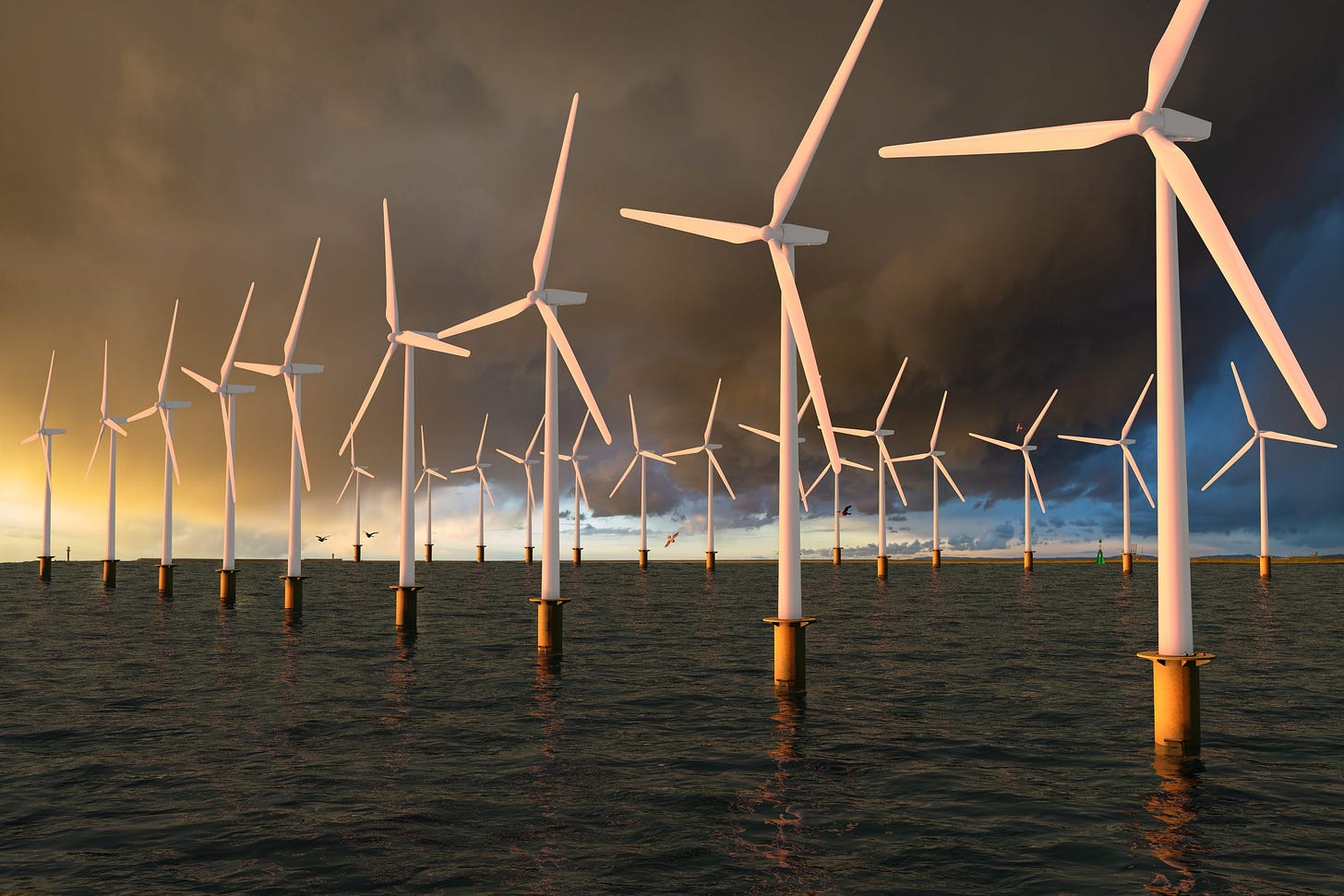The Exorbitant Cost of Cheap Wind Power

When Dolly Parton famously quipped that “it costs a lot of money to look this cheap”, she was only doing what she always does: say it as she sees it. Growing up in rural Southern poverty, the woman she most wanted to be like was the person her mother described as “the town tramp, all hair, heels, and tight skirts.” From an early age, Dolly was sure that would be her look. Dolly defied the odds by developing her expensive alter ego and became a recording legend, successful businesswoman and generous philanthropist today reputedly worth $740m. Not bad for someone born into a family of 12 children in the harsh reality of 1940s rural Tennessee. She knew the investment in her appearance was money well spent. Unfortunately, the same cannot be said today of our investment in offshore wind.
After 18 months of unprecedented sustained increases in interest rates, the price of time ballooned, revealing multiple financial delusions and fallacies previously concealed by the over-extended duration bubble of the last 15 years. One misconception that recently surfaced is the true cost of offshore wind energy. While currently contained to the margins of our financial news reporting, the growing realisation that a critical pillar in our energy transition cannot lode bear brings back memories of 2008. The realisation that the financial assets manufactured by the subprime mortgage boom were not all they had first appeared ultimately proved incapable of supporting bank balance sheets, which had gone all in on this ‘too good to be true’ asset class.
The inconvenient truth of our net-zero path is that it involves moving to less-dense energy sources. Rather than the evolutionary innovative process operative in the transition from wood to coal or coal to oil and gas, this transition is a coerced arm lock on consumers and taxpayers to accept less efficient energy sources. Writers such as the prolific Vaclav Smil have articulated the physical constraints of our policy choice, and economic and political historian Helen Thomson has contextualised its implications as nothing short of requiring a wholesale reset of civilisation.
As investor manager Barry Norris puts it, “The energy transition seeks to replace an economically superior with an inferior product. Consequently, it requires unsustainable exogenous factors [including] free capital, from zero interest rates which no longer exist.” But how can this be the case when the accepted wisdom has been how much cheaper renewable energy has become for the last twenty years? The experts tell us that the cost of wind and solar power has plummeted, meaning that it is only a matter of time before all our energy needs will met with 100% renewable sources. Energy influencer Doomberg revealed last week that the problem lies in the religious zeal attached to the Levelised Cost of Energy, or LCOE.
One of the five flaws Doomberg asserts about LCOE calculations is that it ignores the intermittency of renewable energy, operating in a hypothetical world where all power is fungible. However, managing an energy grid is a complex challenge. As an energy system becomes more impacted by intermittent sources, such as wind and solar, the system cost of the output becomes unmanageably volatile. As Norris describes it, “Building even more wind capacity in the UK is like a factory owner deciding to hire additional workers on long-term contracts who guarantee only to turn up when they are not needed and, at the same, paying the factory’s existing workers — gas power plants in this analogy.” In his view, the UK is already at the point where the amount of wind is the limiting factor in the production of offshore wind, not the number of turbines. Building a renewable grid is, he believes, a political indulgence that would cost the UK 100% of its GDP but still do very little, if anything, to reduce aggregate global emissions.
In the report into the NASA Challenger space shuttle disaster, physicist and Nobel Laureate Richard Feynman concluded, “For a successful technology, reality must take precedence over public relations, for Nature cannot be fooled.” Today, companies developing offshore wind projects are learning Feynman’s lessons. As Mads Nipper, Ørsted’s CEO, told Bloomberg News, the answer is that it is now “inevitable” that consumers will have to pay more and green industry lobbyists are confident that the Government will acquiesce to their demands.
Politicians remain susceptible to the myth that building more offshore wind will produce cheap energy. The reality is that more wind is simply uneconomical and hugely costly. Dolly would understand, as she said, “I’m not offended by all the dumb blonde jokes because I know I’m not dumb – and I’m not blonde either.”
Jeremy
12.11.2023
Britain is a Goner with the Wind, Barry Norris
Why Net Zero Requires a Reinvention of Civilisation, Helen Thomson
Energy & Civilisation, Vaclav Smil
The post The Exorbitant Cost of Cheap Wind Power appeared first on Progressive.



